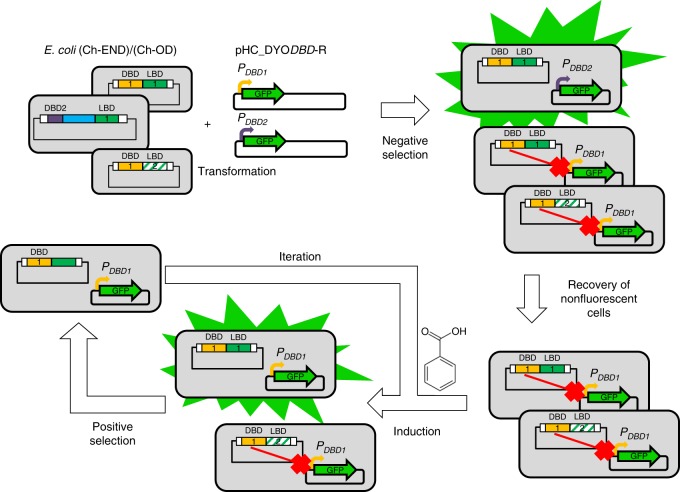Fig. 3.
Schematic representation of enrichment process. Chemically competent E. coli (Ch-END)/(Ch-OD) cells (gray rectangles) carrying vectors pCKTRBS/pCKTRBS-OD expressing chimeric TFs were transformed with reporter plasmids pHC_DYODBD-R as described in Methods. The resulting cells were grown in LB media in the presence of aTc. Under this culture conditions the chimeric TFs were expressed. Every TF contains one out of 15 DBD. In the cells where the DBD of the chimera (represented as yellow and purple rectangles) was able to recognize the operator boxes of the reporter promoter (bent arrows in yellow and purple) introduced in pHC_DYODBD-R, and it retained its DNA-binding capabilities, the expression of GFP is repressed. On the other hand, GFP was highly transcribed in the cells where the TF was not able to interact with the reporter promoter. The cells showing the lowest levels of GFP expression were recovered using the FACS enrichment described in Methods in the so called Negative Sorting. The recovered cells were grown in the presence of the inducer molecule (benzoate). TFs carrying a functional LBD were able to recognize the inducer and transduce that information to the DBD triggering a conformational change strong enough to detach the DBD from the DNA. Under these conditions bacteria carrying functional TFs would resume the transcription of GFP from the reporter promoter. A FACS sorting allowed to obtain a population enriched in the functional chimeras (Positive Sorting). This enrichment process was iterated

